
Laminate flooring is a synthetic multilayer flooring option, designed to emulate the look of real wood flooring. Laminate flooring is made up of fiberboard and melamine, with a floor-like image printed on top.
Some of the best things about laminate floors are that they are also an affordable alternative to hardwood floors and can last between 15 and 25 years. Modern laminate flooring comes in a variety of colors and patterns, giving homeowners many options when deciding on rooms, color schemes, and interior design styles.
Installing laminate flooring is a popular DIY project for many homeowners. Although many install their own laminate flooring successfully, it is important to research the process to make sure it is installed correctly and to avoid costly mistakes.
Proper installation is essential when installing laminate flooring.
1. Using It In The Wrong Places
Although laminate flooring is durable, there are areas of the home where installation should be avoided. Due to its composition of fiberboard, laminate flooring should not be installed in bathrooms, utility rooms, or any rooms that could consistently expose the floor to water.
Over time, laminate flooring will warp when exposed to moisture and high humidity. In general, laminate flooring is fine to install in kitchens as long as they are properly taken care of.
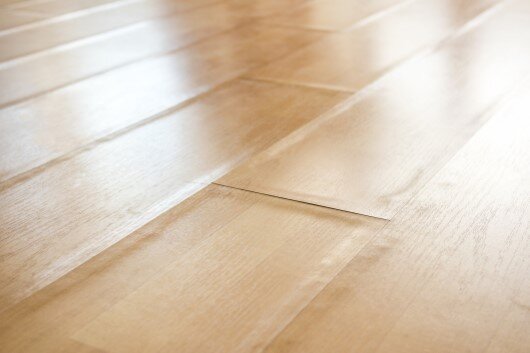
2. Poor Preparation
Before laying laminate flooring, be sure to properly remove old flooring and debris from the area. Although it is recommended to remove any existing flooring down to the subfloor, it is essential that it is done if your existing floor is a floating floor (not secured to the subfloor).
In addition make sure that all debris is removed and that you are starting installation on a clean and level surface.
3. Laying It On Uneven Or Wavy Subfloors
Even if you have installed all the planks correctly, laying laminate over uneven floors is a definite way to have problems in the future. Before you begin, you should assess and fix issues by using a level to determine if your subfloor is uneven and by using an underlayment or floor-leveling compound to correct the problem.
Taking time to level the subfloor will prevent buckling and increase the life of your laminate floors.
4. Not Laying It Parallel To The Wall Or Laying It Crooked
For best results, laminate planks should run parallel to walls in the long direction of the room.
When you are tapping in boards, it is likely that previously installed boards will slightly shift.
As you progress, the crookedness becomes more obvious and can lead your planks to run at an awkward angle.
5. Laying In The Wrong Direction

The direction you install laminate flooring has an effect on how the room is perceived. Some orientations can make a room feel smaller and can be off-putting to the eye. In general, boards should run parallel to the long direction of the room.
For example, if a living room is 20×12 feet, you would want to lay the boards running parallel to the longer walls. Running them parallel to the 12-foot wall can make the room feel tight.
Running planks parallel to long walls looks most natural, especially in hallways where it is really narrow. However, depending on the room, sometimes running planks toward a focal point is the best option, such as large fireplaces or large built-in shelving.
If you are planning on laying laminate flooring throughout multiple rooms without transitions you should choose a direction based on what makes sense for the majority of the project.
6. Lining Up Seams
Lining up seams is a tell-tale sign of an inexperienced individual installing laminate flooring. If you want a professional look when laying laminate floors, stagger your seams. Aside from visual appeal, staggering laminate planks add structural integrity.
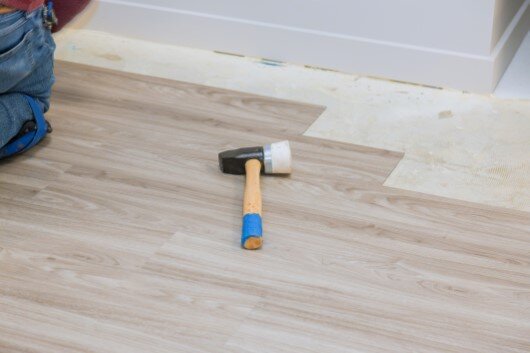
7. Not Leaving Room At Walls For Expansion
Laminate floor is a floating floor, meaning that it is not secured to the subfloor with glue, nails, or staples. Laminate flooring will expand and contract due to environmental changes, mainly temperature, and humidity.
It is absolutely vital to leave room around walls and create expansion gaps to avoid buckling of the laminate planks. Using expansion joints will also aid in reducing undesirable damage.
8. Not Using Underlayment
Underlayment, or padding, is an added layer between the subfloor and the finished floor. When installing a floor over concrete slabs, tile, cement, and sometimes even wood, there is a chance that moisture could travel upward to the floor. A moisture-proof underlayment will protect your new floor from becoming wet and warping.
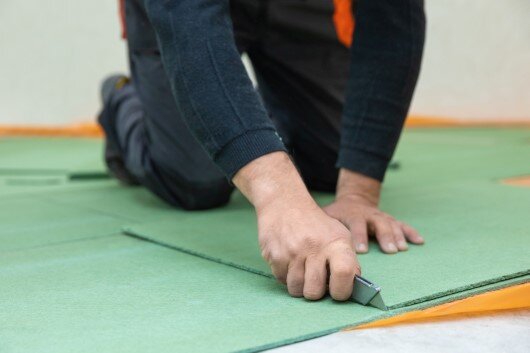
9. Choosing The Wrong Color To Go With Walls And Other Accents
New flooring is an excellent way to give your home an updated look, and one of the great things about a full renovation is that you have the freedom to give your home a completely new style.
However, if you are only replacing the floor, pay close attention to how the floor pattern will match the current wall color and other dominant areas of your home such as cabinets.
Neglecting planning can leave you with a mismatched house or having to repaint to match the floor, along with the cost of the paint.
10. Buying Low-Quality Laminate
Quality plays a huge factor when it comes to the lifetime of laminate flooring. In low-quality laminate, you will likely find less realistic patterns and unnatural colors. In addition, cheap laminate floors will be thin, are likely to last less than 10 years, and could peel and chip.
If you have already decided to take on the project of installing laminate flooring, it is worth the investment to buy higher quality laminate flooring to save you headaches down the road.
11. Bad Fit Around Door Jambs And Other Obstructions
Laying laminate flooring in tight spots can be tricky. Although poor fits are only a cosmetic problem, seeing down to the subfloor due to a rough undercut is a big indicator that the flooring installation was a DIY project.
12. Not Clicking Pieces Together Properly
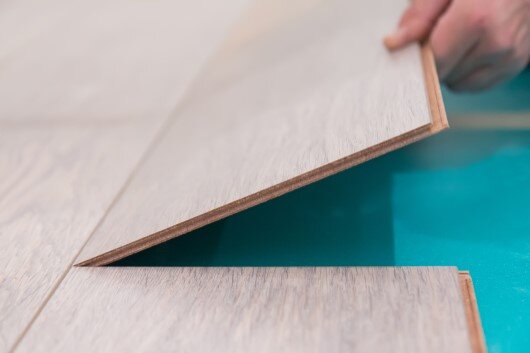
Make sure your pieces are clicking together properly, otherwise they will separate over time. One likely reason pieces may not be clicking together is that there may be small pieces of debris on one of the planks. Clean the sides of the planks you are trying to click and the problem should be fixed.
13. Not Using A Tapping Block
A tapping block distributes the load from a mallet when clicking laminate planks together. Using a mallet by itself can chip the edges of boards, damaging your new laminate planks. See video instructions on how to use a tapping block here.
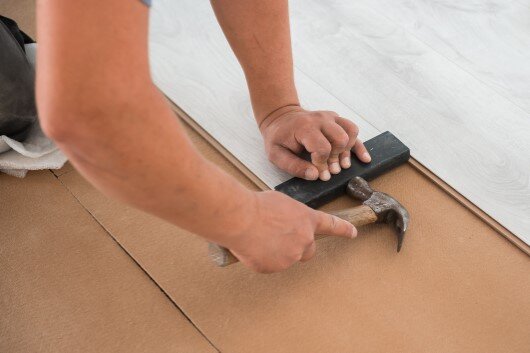
14. Flooring Moving Around While Tapping In Pieces
As you continue the installation process, you may find that flooring you have already laid is shifting as you tap in more pieces. This can also cause your planks to become crooked, something that will not correct itself.
To combat this issue, adding additional weight to the already laid flooring can help keep it stationary. You can do this by laying full boxes of the flooring on it, or by having someone stand on already laid flooring.
15. Not Using Knee Pads
Unsurprisingly, flooring installation is going to require you to be on the floor for extended amounts of time. Whether it’s a small or large project, knee pads are affordable products that are well worth the investment.
Along with being more comfortable working, knee pads protect cartilage and tissue within the knee joint.
Over time, damaged cartilage and tissue can lead to osteoarthritis, a degenerative disease that causes pain and joint stiffness.
16. Not Buying Enough Flooring
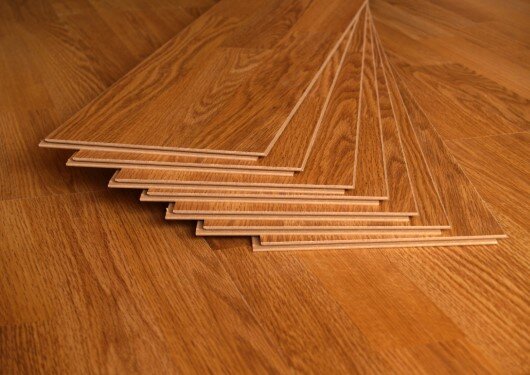
Simply measuring your room is not enough when it comes to deciding how much laminate flooring to purchase. During the installation process, you will need to cut off the ends of laminate planks so that they fit the measurements of your room.
There will always be scrap from mistakes and offcuts, so you should buy at least 10% extra.
17. Failing To Finish Off The Job
Nearing the end of a labor-intensive project is satisfying, but will often leave you exhausted from the many hours of work already put into the project. With the majority of the work done, it’s easy for homeowners to call it quits without completing the finishing touches.
However, finishing off the job by adding transition pieces and trim is worth the time and will give you the clean, new look you have been working for.
Caring For Laminate Flooring
Laminate is durable, but poor floor maintenance will decrease the life of your floor. Cleaning laminate floor properly is essential. Start by reading the manufacturer’s instructions.
To prevent damage, do not use any abrasive tools as they can scratch the floor. It is okay to use wet mops on laminate flooring, however, wring mops out thoroughly to keep excessive water off the floor and use them sparingly, otherwise, you may damage your floor.
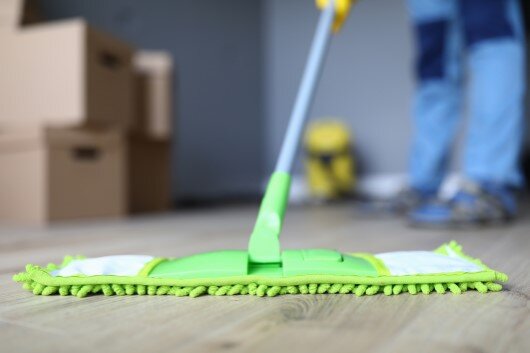
The best way to clean laminate flooring is by using a microfiber mop made for laminate flooring and laminate floor cleaner. For deep cleaning, you can use steam cleaners occasionally.
In all cleaning methods, it is important that laminate flooring dries quickly.
Conclusion
Laminate flooring is a great choice when choosing to install new flooring. Some of the benefits of laminate flooring are durability and cost effectiveness.
Laying laminate flooring is a task that many homeowners feel confident completing independently. However, it can still be a pricier project so planning and research are important to make sure that you install laminate floors properly.
Looking out for these common laminate flooring mistakes will make your DIY project look professional!
